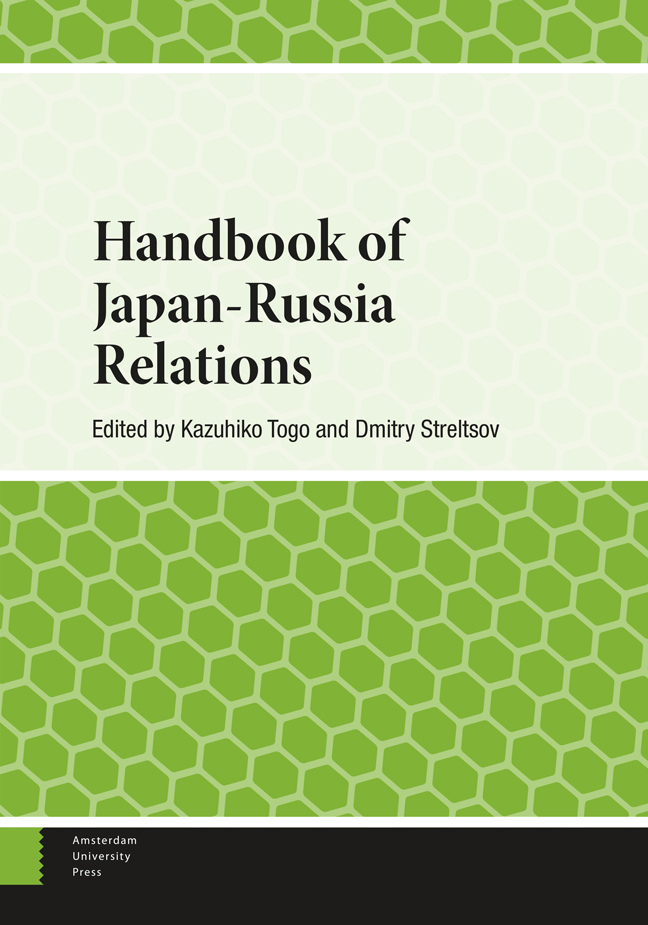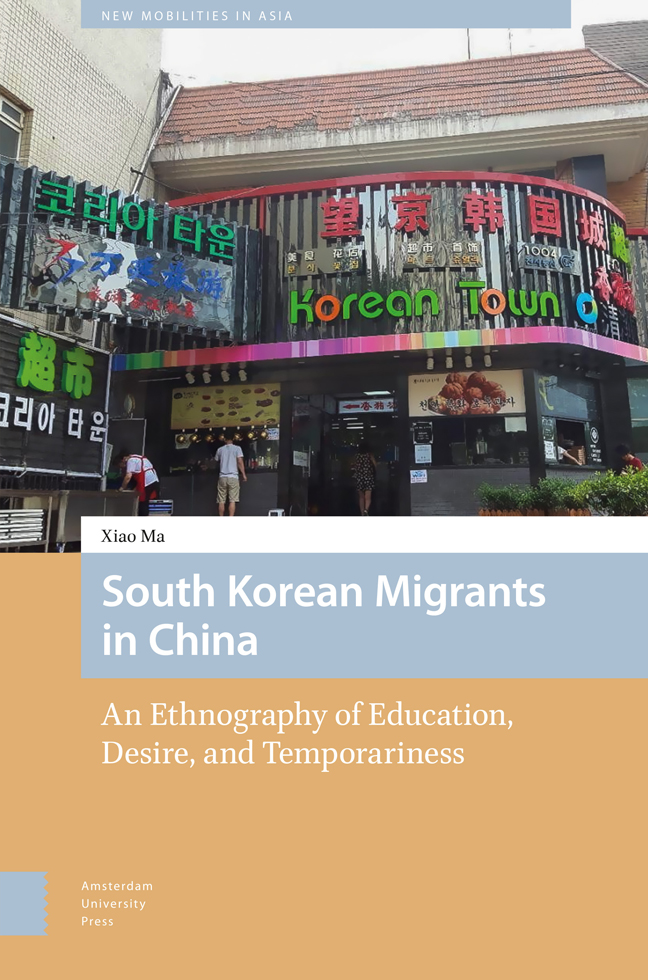2249 results in Amsterdam University Press
Part 2 - Territory
-
- Book:
- Handbook of Japan-Russia Relations
- Published by:
- Amsterdam University Press
- Published online:
- 26 March 2024
- Print publication:
- 02 January 2024, pp 73-74
-
- Chapter
- Export citation
6 - The Japanese View of Northern Territorial Questions, or NTQ
-
-
- Book:
- Handbook of Japan-Russia Relations
- Published by:
- Amsterdam University Press
- Published online:
- 26 March 2024
- Print publication:
- 02 January 2024, pp 95-114
-
- Chapter
- Export citation

Handbook of Japan-Russia Relations
-
- Published by:
- Amsterdam University Press
- Published online:
- 26 March 2024
- Print publication:
- 02 January 2024
4 - Japan-Russia Relations and Security: The Japanese Perspective
-
-
- Book:
- Handbook of Japan-Russia Relations
- Published by:
- Amsterdam University Press
- Published online:
- 26 March 2024
- Print publication:
- 02 January 2024, pp 56-72
-
- Chapter
- Export citation
Appendix 2 - Tokyo Declaration (1993)
-
- Book:
- Handbook of Japan-Russia Relations
- Published by:
- Amsterdam University Press
- Published online:
- 26 March 2024
- Print publication:
- 02 January 2024, pp 383-386
-
- Chapter
- Export citation
9 - Energy and Other Natural Resources in Russia-Japan Relations: The Russian Perspective
-
-
- Book:
- Handbook of Japan-Russia Relations
- Published by:
- Amsterdam University Press
- Published online:
- 26 March 2024
- Print publication:
- 02 January 2024, pp 155-185
-
- Chapter
- Export citation
Contents
-
- Book:
- Handbook of Japan-Russia Relations
- Published by:
- Amsterdam University Press
- Published online:
- 26 March 2024
- Print publication:
- 02 January 2024, pp v-viii
-
- Chapter
- Export citation
Part 5 - Culture
-
- Book:
- Handbook of Japan-Russia Relations
- Published by:
- Amsterdam University Press
- Published online:
- 26 March 2024
- Print publication:
- 02 January 2024, pp 235-236
-
- Chapter
- Export citation
1 - Introduction
-
- Book:
- South Korean Migrants in China
- Published by:
- Amsterdam University Press
- Published online:
- 26 March 2024
- Print publication:
- 02 January 2024, pp 9-38
-
- Chapter
- Export citation
List of Illustrations
-
- Book:
- South Korean Migrants in China
- Published by:
- Amsterdam University Press
- Published online:
- 26 March 2024
- Print publication:
- 02 January 2024, pp 7-7
-
- Chapter
- Export citation
Part 3 - The Economy and Energy
-
- Book:
- Handbook of Japan-Russia Relations
- Published by:
- Amsterdam University Press
- Published online:
- 26 March 2024
- Print publication:
- 02 January 2024, pp 115-116
-
- Chapter
- Export citation
Acknowledgements
-
- Book:
- South Korean Migrants in China
- Published by:
- Amsterdam University Press
- Published online:
- 26 March 2024
- Print publication:
- 02 January 2024, pp 8-8
-
- Chapter
- Export citation
17 - The Troublemaker? Russian Perceptions of the Role of the United States in Russia-Japan Relations
-
-
- Book:
- Handbook of Japan-Russia Relations
- Published by:
- Amsterdam University Press
- Published online:
- 26 March 2024
- Print publication:
- 02 January 2024, pp 308-329
-
- Chapter
- Export citation

South Korean Migrants in China
- An Ethnography of Education, Desire, and Temporariness
-
- Published by:
- Amsterdam University Press
- Published online:
- 26 March 2024
- Print publication:
- 02 January 2024
Abbreviations
-
- Book:
- Handbook of Japan-Russia Relations
- Published by:
- Amsterdam University Press
- Published online:
- 26 March 2024
- Print publication:
- 02 January 2024, pp xix-xx
-
- Chapter
- Export citation
2 - Temporary Residents’ Community in Beijing
-
- Book:
- South Korean Migrants in China
- Published by:
- Amsterdam University Press
- Published online:
- 26 March 2024
- Print publication:
- 02 January 2024, pp 39-74
-
- Chapter
- Export citation
7 - Russia-Japan Trade and Economic Relations: The Russian Perspective
-
-
- Book:
- Handbook of Japan-Russia Relations
- Published by:
- Amsterdam University Press
- Published online:
- 26 March 2024
- Print publication:
- 02 January 2024, pp 117-139
-
- Chapter
- Export citation
Frontmatter
-
- Book:
- Handbook of Japan-Russia Relations
- Published by:
- Amsterdam University Press
- Published online:
- 26 March 2024
- Print publication:
- 02 January 2024, pp i-iv
-
- Chapter
- Export citation
Dedication
-
- Book:
- Handbook of Japan-Russia Relations
- Published by:
- Amsterdam University Press
- Published online:
- 26 March 2024
- Print publication:
- 02 January 2024, pp ix-x
-
- Chapter
- Export citation
20 - The Role of China in Japan-Russia Relations: The Japanese Perspective
-
-
- Book:
- Handbook of Japan-Russia Relations
- Published by:
- Amsterdam University Press
- Published online:
- 26 March 2024
- Print publication:
- 02 January 2024, pp 364-378
-
- Chapter
- Export citation



